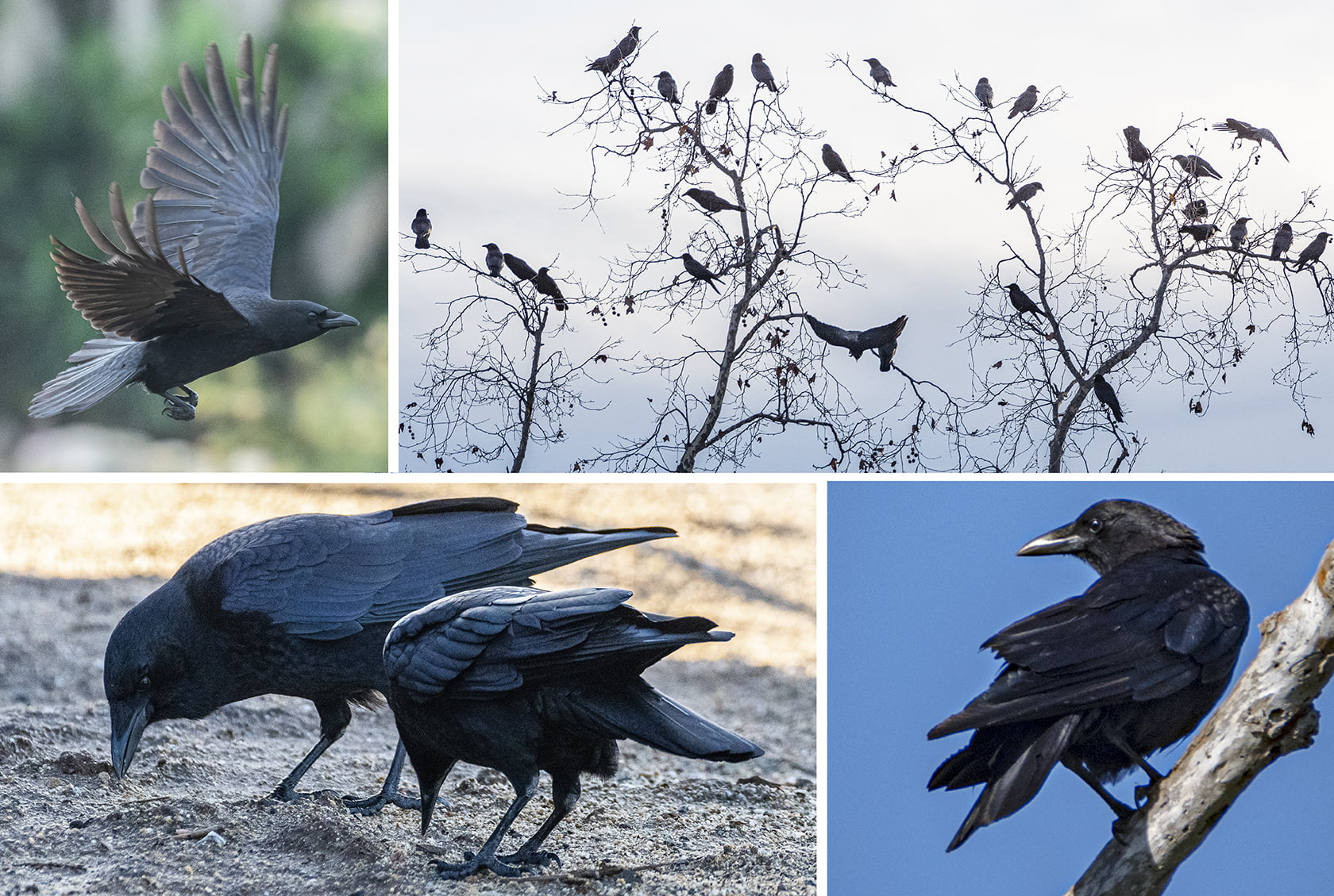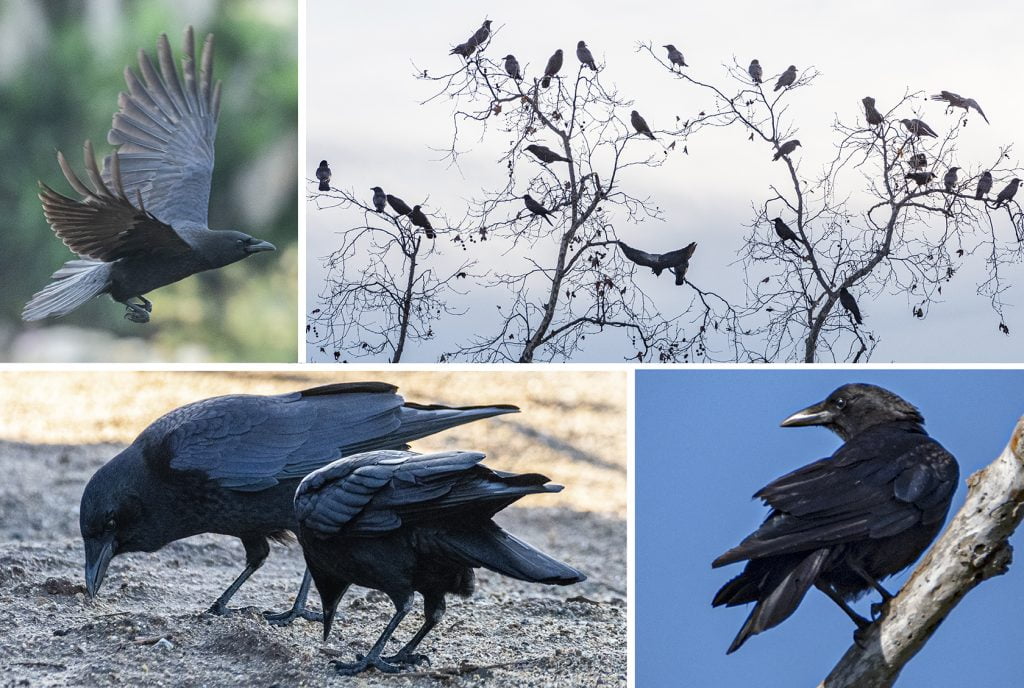
American Crow
The loud, distinctive CAW! CAW! CAW! of the American Crow is a familiar year-round sound echoing across our wide continent in farm, field, and urban areas. Crows are considered to be among the most intelligent of birds, with their remarkably large brains and observably clever behaviors. Their widespread abundance serves as a valid testimony to their flexibility and adaptability leading to continued success in highly diverse climates and in ever challenging, shifting situations.
Like humans, American Crows are omnivores. Crows can exploit an immense array of food opportunities including insects, spiders, snakes, caterpillars, shellfish, fruit, berries, along with carrion, garbage and even the young of other birds or rodents. Opportunistic foragers, they quickly adapt to novel food sources, cleverly leveraging their prodigious intellect to discover new forms of nutrition. They scavenge along roadsides and garbage dumps where they often shrewdly use crude tools to successfully penetrate vexing yet appealing products. An acquired affinity for Cheetos and discarded french fries numbers among their most effective urban adaptations. Additionally, they have been observed skillfully carrying hard-shelled mollusks high into the air in order to drop the shell on rocks in order to break them, thus revealing their tasty treasures.
Holding a grudge! The crow’s remarkable intelligence and has been demonstrated by an astonishing ability to recognize individual humans and to astutely associate that person with a prior good or bad experience. The crow may characterize the individual as a “friend” or “foe” and then go on to overtly communicate that opinion to other crows within their social circle. The person deemed to be a “foe” will be relentlessly vocally harassed by the whole flock. Conversely, a person considered to be a “friend” may in fact receive gifts of small shiny trinkets as a reward for their perceived kind behavior.
The common large black American Crow is readily recognizable and needs scant introduction. Yet it is worth noting that a side-by-side comparison will reveal that the adult female is generally smaller than her similarly plumaged male counterpart and that juvenile/immature first-year birds display striking blue eyes unlike brown eyed adults. As for life span, although first-year survival rate may often be less than 50%, a surviving adult may live ten years or more.
Crows are highly social creatures. They mate for life, and when not nesting, they gather in vast communal roosts on winter nights, sometimes with many thousands roosting in a single tree-filled grove. Whatever the season, the American Crow is one of the most fascinating avian species in our midst and continually surprises us with its complex social structure and captivating behaviors.
Bird gallery



